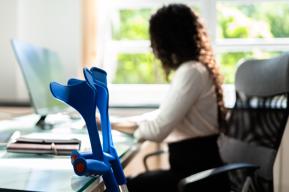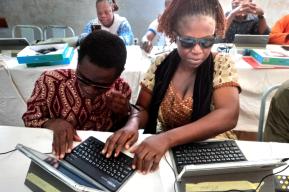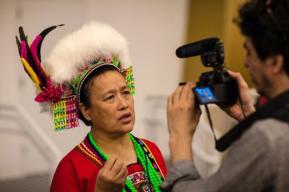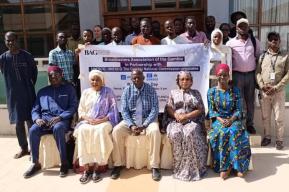News
Advancing Disability Equality in Media: Seven Key Action Points

When we look at employment rates of person with disabilities globally, the aggregate data shows us that 4 out of 10 are outside of the labour market.
Despite this, the media's impact can be used positively to raise awareness, combat discrimination, and change societal attitudes. It can also empower individuals with disabilities to express themselves and access to information. These issues were discussed at the recent UNESCO International Conference Zero Project on Persons with Disabilities on 21 February 2024. They had been tackled in the Webinar and Exclusive Preview “Disability Equality in Media", which was organized by UNESCO on 6 December 2023. This event was a part of Organization’s contribution to the commemoration of the International Day of Persons with Disabilities and falls within the Organisation’s mission to promote diversity in media.
UNESCO is leading the way with initiatives such as the Practical Manual on Disability Equality in the Media and a Master Class consisting of ten instructional videos. These efforts are geared towards equipping media professionals with the skills and knowledge needed to foster inclusivity and accessibility in their content production and organizational practices.
During the webinar, experts emphasized the urgent need for media organizations to adopt fair and balanced editorial policies, produce accessible content and create inclusive work environments. Ms Kristin Gilger, Professor Emerita at the Walter Cronkite School of Journalism and Mass Communication, stressed the importance of accurately representing persons with disabilities in media narratives to challenge stereotypes and promote societal acceptance.
Persons with disabilities need to see themselves reflected respectfully and accurately on air, online, in print, and so does everybody else. If that doesn't happen (..), then social perceptions of disability will never change.
Moreover, as technology evolves, ensuring accessibility in media content becomes increasingly vital. Mr Alireza Darvishy, Professor and Head of the ICT-Accessibility Lab at Zurich University of Applied Sciences and UNESCO/Emir Jaber al-Ahmad al-Jaber al-Sabah Prize laureate for Digital Empowerment of Persons with Disabilities, emphasized the need to integrate accessibility standards into content production processes.
Media content accessibility should be considered from the beginning.(..) Accessible digital technologies can improve the lives of persons with disabilities and eliminate barriers.
In addition, universal designs, requiring all media content and services to be usable by the widest possible range of audiences and staff, will benefit both employees and audiences.
Mr Agam Shah, a journalist and board member of the National Center on Disability and Journalism, highlighted the value of creating inclusive workplaces:
Persons with disabilities remain underrepresented. An inclusive workplace is beneficial. It builds more inclusive content and more diverse practices that help media professionals with disabilities to do their job.
The meeting report outlines seven steps to promote disability equality in the media:
- Awareness of disability equality in society is largely created by the media.
- Mainstreaming disability equality into editorial policy and educational programmes.
- Accessible media content boost audience with disabilities engagement and growth in media industry.
- Inclusive and supportive workplace for media professionals with disabilities.
- Self-monitoring mechanisms responding to disability equality in media.
- Integrating disability equality into media laws, regulations, and decision-making process.
- Mainstreaming disability equality in the UN Communication and relations with media.
Moving forward, UNESCO will publish the Practical Manual and Master Class on Disability Equality in the Media in the first half of 2024. These resources aim to empower media organisations to implement inclusive practices and drive positive change in the representation of persons with disabilities across all media platforms.










